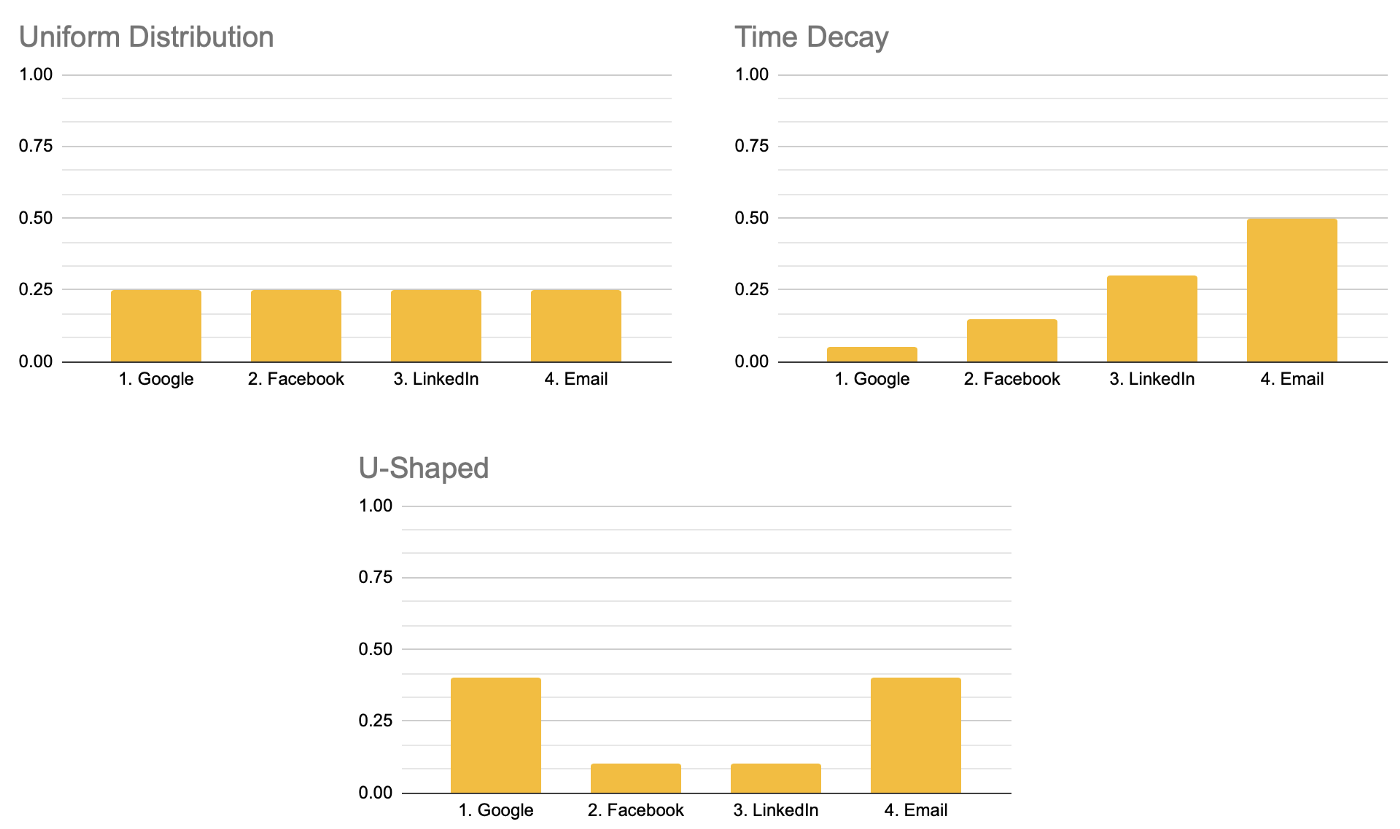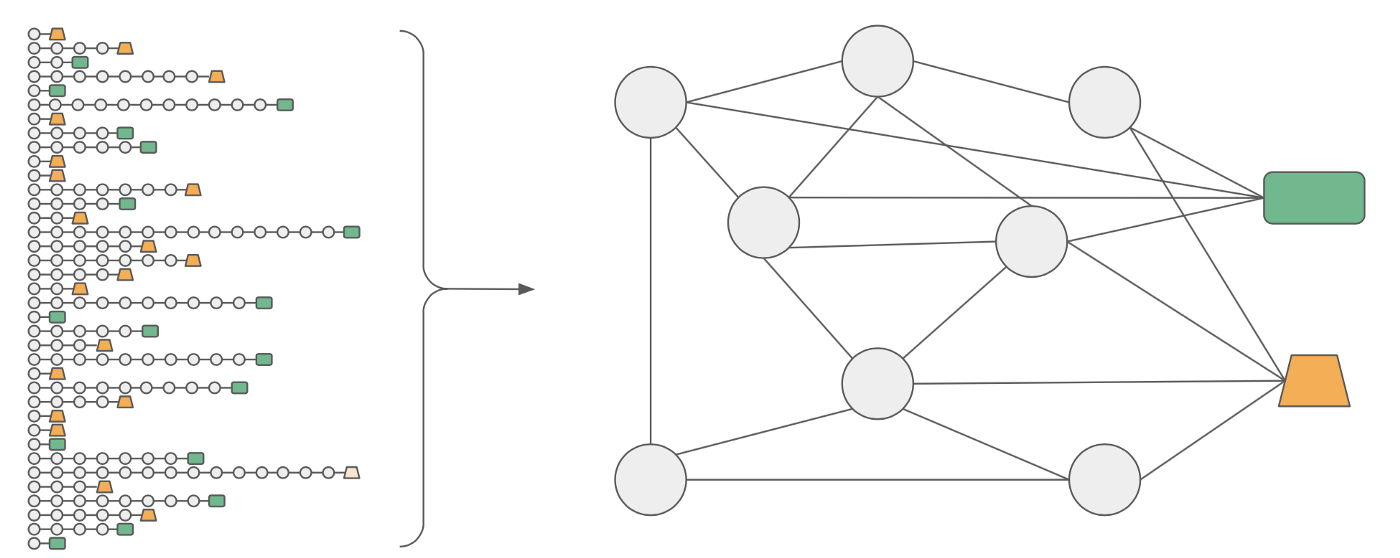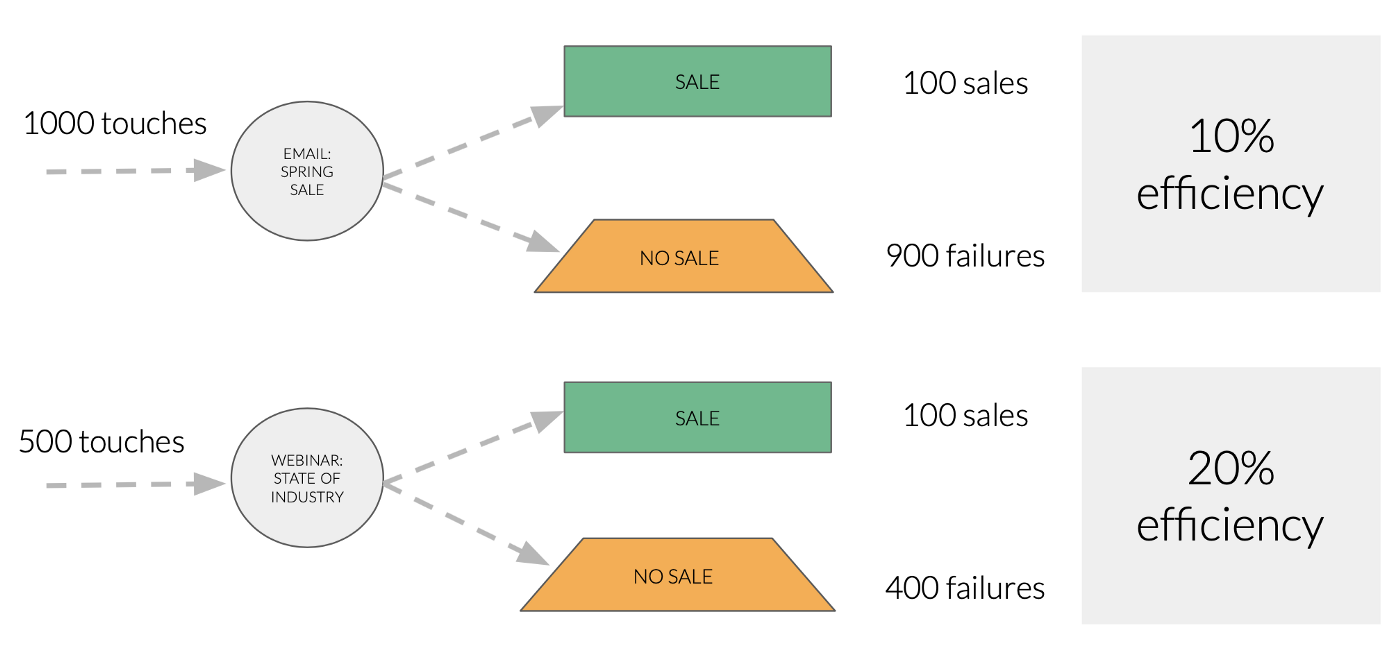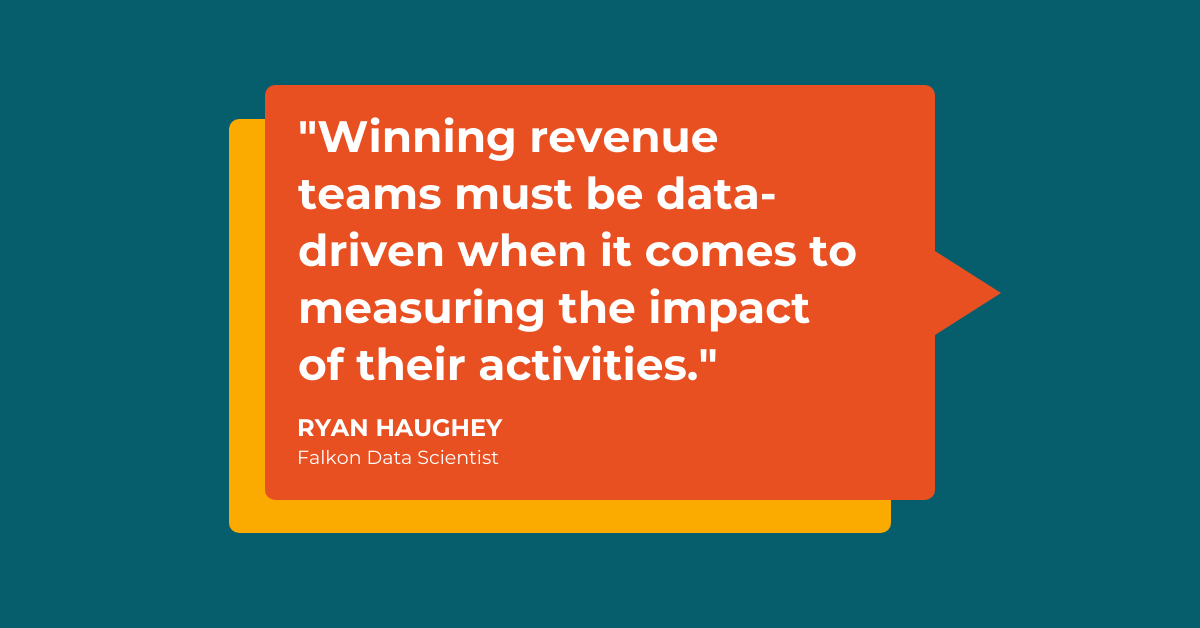Hitting ambitious revenue goals takes an all-in effort across sales, marketing, and customer success teams to deploy winning playbooks around discovering, attracting, and nurturing customers on their purchase journey. Every interaction that a marketing campaign, Sales & Revenue Development teams (SDRs, ADRs, and the like), AE, or CSM has with a prospect or customer impacts their propensity to convert or churn. Winning revenue teams must be disciplined and data-driven when it comes to measuring the impact of their activities and understanding what interactions truly impact customers in a positive way. One of the most powerful tools for this is attribution.
What is attribution?
Attribution is the simple act of assigning accurate credit for some desired outcome (such as new leads, opportunities, or sales) to a series of revenue team activities, commonly called touchpoints in attribution-speak. The inspiration for this should be straightforward: when I see that I have a new customer, I want to understand what activities had the biggest impact in winning this customer, be it an ad they clicked on, a webinar they attended, or a conversation with an account executive.
As sales roll in over the course of the day or week, examining these attributions holistically enables you to understand what channels, campaigns, and activities are driving customer acquisition and sales. Based on this information, you can quickly make decisions about where to invest advertising resources, make modifications to sales playbooks, and learn which sales rep’s demos are making it rain.
So what’s the catch?
Now nearly all teams have implemented at least some form of attribution model, but most find that they aren’t getting actionable insight from their approach. Why? The truth is, simply, attribution is hard. And this isn’t necessarily just hard in the technical sense of it requires a bunch of smart people to build a smart model that answers all of your attribution questions — though this can be a challenge in its own right. Rather, there are several key overlapping factors that make attribution difficult:
- It exists at the overlap of business judgment, data collection, and modeling. Building an impactful attribution model requires assembling a multi-disciplinary team that understands what activities and outcomes need tracking, what data is available, and what methodologies can be employed.
- It needs to take a holistic view of all customer touchpoints. Too frequently, companies think of attribution as only applicable to marketing activities from digital channels and as a result only utilize page view and clickstream data to see how people arrive at and move through their site. Instead, attribution models need to capture all interactions with customers, including sales activities (such as email or phone exchanges), CSM engagement, and event attendance.
- Without appropriate granularity, actionability is difficult, if even possible. Many times, we see companies just looking at channel-level attribution data. While this can be helpful for understanding the broad impacts of, say, total Adwords spend against LinkedIn spend, it doesn’t let you drill down to the necessary actionable detail to understand which specific campaigns had the most impact on which customer segments. This becomes even more important as a wider range of activities are included — you should be able to see which reps and sales teams are having the highest impact so you can share their best practices.
- Direct and Organic channels tend to be opaque and confusing. Especially at B2B companies, Organic (such as unpaid search or social traffic) and Direct traffic command a large share of attributable activity. This is because customers frequently make several visits as they educate themselves on the offering and assess various features against your competitors. As a results, teams get frustrated when they see huge amounts of their business attributable to Direct, since it feels like it is out of one’s control. A common response is to remove Direct and organic sources entirely, but this now creates huge blindspots and overstates other channels’ importance. However, through page-level granularity and mapping of traffic sourcing through these channels, you can start to peel back the curtains on what the Direct drivers are.
- The pathway is more important than the individual touches. Finally, teams frequently consider just the rolled-up results, so they lose the more nuanced understanding of the individual pathways that ultimately drive the conversions. An effective attribution model should let you seamlessly transition from examining the most impactful interactions and campaigns to placing those in context of the broader customer journey, such that you can iteratively design winning playbooks.
What do some basic models look like?
As a bit of grounding before we talk about the more holistic, data-driven models that are needed to solve the above challenges in today’s environment, I wanted to quickly review some of the existing approaches to attribution that you may have previously heard about or implemented:
- Single-touch Models. The simplest form of attribution models assign all credit to a single touchpoint in the journey, most commonly the last or first touch. The potential shortcomings of this are apparent: there’s a whole range of activities that won’t be the first or last interaction but are nonetheless essential — think webinars and whitepapers — and will get no credit in this arrangement.

- Multi-touch Models: To address this, some teams utilize blended attribution models which consider multiple touchpoints in the journey based on some pre-determined formula. There are effectively infinite options here, but the most common multi-touch models are: uniform distribution(every touchpoint gets the same), time decay (more credit is assigned to more recent touches) or U-shaped (most credit is given to first and last touches, with a smaller share distributed amongst middle touches. Similar to single touch models, the shortcomings here is that we are getting importance based on some ruleset we developed, rather than the actual leverage the touches gives us in conversion. If there are highly impactful touch points that don’t fit cleanly into the formula, then we will totally miss their impact — or we will need to be continually tweaking our model.

Unlocking actionability with data-driven attribution
It’s clear that simple heuristics aren’t enough to get the depth of understanding needed to make the right decision in the right amount of time. To solve this, we turn to data-driven, or model-based, multi-touch attribution. This class of techniques give a more nuanced understanding of the importance of individual channels, campaigns, and touchpoints unique contribution to conversion events — meaning they are judged by their objective value in the customer’s journey rather than basic heuristics.
Data-driven models (with variations of Markov Chains being the most common) operate by assigning individualized scores to the touchpoints in a conversion journey based on their specific role in the attribution. This means that we are seeing the actual impact that a given campaign, call, demo, or blog series had on conversions, rather than a somewhat arbitrary score based on where it happened to be located or how many other interactions there were.
Data-driven models differ from heuristics in a few key ways:
- They are results-oriented instead of rule-oriented. These models are indifferent to the relative position of any given channel, campaign, or touchpoint in a customer journey. If a certain channel consistently drives conversion events, regardless of if it’s the first, fifth, thirteenth, or last touchpoint in a journey, it gets assigned higher value.
- They have a holistic view of success. Instead of considering each journey in isolation, they look for patterns across many different customer journeys. Meaning if we see one campaign consistently cropping up in conversion journeys, we will tend to give that much greater importance than if we had just considered it one by one.

- They consider success and failure. As important as understanding what your successful paths are is learning from the failures. Data-driven models are most impactful when they can consider the touchpoints which have an outsized impact on failed journeys in addition to successful ones.
- They are constantly adapting. Winning strategies from last year won’t necessarily have the same impact today. Data-driven models should consistently re-assess the importance it ascribes channels based on the most recent data, while also balancing a perspective of the past.
- They consider efficiency and impact. Many simple models will look at raw channel-level attributions. This often means that highly impactful but underutilized channels are overlooked, and instead the largest channels get the most focus. Data-driven models make it easy to frame attributions in terms of efficiency — that is, highlighting those channels and campaigns that are having outsized impact given their comparative share of touchpoint traffic. Note that some teams will use financial metrics like cost-per-conversion to measure this, but attributing cost, especially to non-paid channels such as Social Media, can be notoriously difficult in its own right and distract from the initial objective of identifying top-performing areas. I generally recommend teams not attempt to tackle the cost questions until they have a solid approach to attribution that everyone is onboard with.

Coupled with rich expression of dimensions on your key metrics, adopting a data-driven framework empowers revenue teams to unlock granular levels in understanding the drivers of success or the roadblocks that are holding you back from success. This lets you make smart, quick decisions on where to double down, where to take corrective action, and where to dial back investment.
To hit your goals, revenue teams must be having serious conversations about how they can do attribution smartly. If you’re interested in learning more about best practices in attribution and Falkon’s specific approach to this, check out our white paper.
Want more articles like this? Follow Falkon on LinkedIn.
